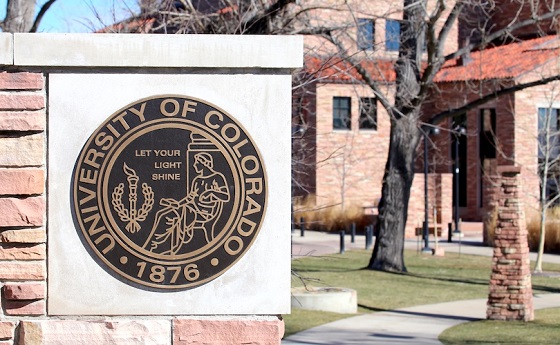Christopher Rufo
In Charleroi, Pennsylvania, the local population grapples with a surge of Haitian migrants.

Charleroi, Pennsylvania, is a deeply troubled place. The former steel town, built along a stretch of the Monongahela River, south of Pittsburgh, has experienced the typical Rust Belt rise and fall. The industrial economy, which had turned it into something resembling a company town, hollowed out after the Second World War. Some residents fled; others succumbed to vices. The steel mills disappeared. Two drug-abuse treatment centers have since opened their doors.
The town’s population had steadily declined since the middle of the twentieth century, with the most recent Census reporting slightly more than 4,000 residents. Then, suddenly, things changed. Local officials estimate that approximately 2,000 predominantly Haitian migrants have moved in. The town’s Belgium Club and Slovak Club are mostly quiet nowadays, while the Haitians and other recent immigrants have quickly established their presence, even dominance, in a dilapidated corridor downtown.
This change—the replacement of the old ethnics with the new ethnics—is an archetypal American story. And, as in the past, it has caused anxieties and, at times, conflict.
The municipal government has felt the strain. The town, already struggling with high rates of poverty and unemployment, has been forced to assimilate thousands of new arrivals. The schools now crowd with new Haitian pupils, and have had to hire translators and English teachers. Some of the old pipes downtown have started releasing the smell of sewage. And, according to a town councilman, there is a growing sense of trepidation about the alarming number of car crashes, with some vehicles reportedly slamming into buildings.
Among the city’s old guard, frustrations are starting to boil over. Instead of being used to revitalize these communities, these residents argue, resources get redirected to the new arrivals, who undercut wages, drive rents up, and, so far, have failed to assimilate. Worst of all, these residents say, they had no choice—there was never a vote on the question of migration; it simply materialized.
Former president Donald Trump, echoing the sentiments of some of Charleroi’s native citizens, has cast the change in a sinister light. As he told the crowd at a recent rally in Indiana, Pennsylvania, “it takes centuries to build the unique character of each state. . . . But reckless migration policy can change it quickly and permanently.” Progressives, as expected, countered with the usual arguments, claiming that Trump was stoking fear, inciting nativist resentment, and even putting the Haitian migrants in danger.
Neither side, however, seems to have grappled with the mechanics of Charleroi’s abrupt transformation. How did thousands of Haitians end up in a tiny borough in Western Pennsylvania? What are they doing there? And cui bono—who benefits?
The answers to these questions have ramifications not only for Charleroi, but for the general trajectory of mass migration under the Biden administration, which has allowed more than 7 million migrants to enter the United States, either illegally, or, as with some 309,000 Haitians, under ad hoc asylum rules.
The basic pattern in Charleroi has been replicated in thousands of cities and towns across America: the federal government has opened the borders to all comers; a web of publicly funded NGOs has facilitated the flow of migrants within the country; local industries have welcomed the arrival of cheap, pliant labor. And, under these enormous pressures, places like Charleroi often revert to an older form: that of the company town, in which an open conspiracy of government, charity, and industry reshapes the society to its advantage—whether the citizens want it or not.
The best way to understand the migrant crisis is to follow the flow of people, money, and power—in other words, to trace the supply chain of human migration. In Charleroi, we have mapped the web of institutions that have facilitated the flow of migrants from Port-au-Prince. Some of these institutions are public and, as such, must make their records available; others, to avoid scrutiny, keep a low profile.
The initial, and most powerful, institution is the federal government. Over the past four years, Customs and Border Patrol has reported hundreds of thousands of encounters with Haitian nationals. In addition, the White House has admitted 210,000 Haitians through its controversial Humanitarian Parole Program for Cubans, Haitians, Nicaraguans, and Venezuelans (CHNV), which it paused in early August and has since relaunched. The program is presented as a “lawful pathway,” but critics, such as vice presidential candidate J. D. Vance, have called it an “abuse of asylum laws” and warned of its destabilizing effects on communities across the country.
The next link in the web is the network of publicly funded NGOs that provide migrants with resources to assist in travel, housing, income, and work. These groups are called “national resettlement agencies,” and serve as the key middleman in the flow of migration. The scale of this effort is astounding. These agencies are affiliated with more than 340 local offices nationwide and have received some $5.5 billion in new awards since 2021. And, because they are technically non-governmental institutions, they are not required to disclose detailed information about their operations.
In Charleroi, one of the most active resettlement agencies is Jewish Family and Community Services Pittsburgh. According to a September Pittsburgh Post-Gazette report, JFCS staff have been traveling to Charleroi weekly for the past year and a half to resettle many of the migrants. The organization has offered to help migrants sign up for welfare programs, including SNAP, Medicaid, and direct financial assistance. While JFCS Pittsburgh offers “employment services“ to migrants, it denies any involvement with the employer and staffing agencies that were the focus of our investigation.
And yet, business is brisk. In 2023, JFCS Pittsburgh reported $12.5 million in revenue, of which $6.15 million came directly from government grants. Much of the remaining funding came from other nonprofits that also get federal funds, such as a $2.8 million grant from its parent organization, HIAS. And JFCS’s executives enjoy generous salaries: the CEO earned $215,590, the CFO $148,601, and the COO $125,218—all subsidized by the taxpayer.
What is next in the chain? Business. In Charleroi, the Haitians are, above all, a new supply of inexpensive labor. A network of staffing agencies and private companies has recruited the migrants to the city’s factories and assembly lines. While some recruitment happens through word-of-mouth, many staffing agencies partner with local nonprofits that specialize in refugee resettlement to find immigrants who need work.
At the center of this system in Charleroi is Fourth Street Foods, a frozen-food supplier with approximately 1,000 employees, most of whom work on the assembly line. In an exclusive interview, Chris Scott, the CEO and COO of Fourth Street Barbeque (the legal name of the firm that does business as Fourth Street Foods) explained that his company, like many factory businesses, has long relied on immigrant labor, which, he estimates, makes up about 70 percent of its workforce. The firm employs many temporary workers, and, with the arrival of the Haitians, has found a new group of laborers willing to work long days in an industrial freezer, starting at about $12 an hour.
Many of these workers are not directly employed by Fourth Street Foods. Instead, according to Scott, they are hired through staffing agencies, which pay workers about $12 an hour for entry-level food-processing roles and bill Fourth Street Foods over $16 per hour to cover their costs, including transportation and overhead. (The average wage for an entry-level food processor in Washington County was $16.42 per hour in 2023.)
According to a Haitian migrant who worked at Fourth Street and a review of video footage, three staffing agencies—Wellington Staffing Agency, Celebes Staffing Services, and Advantage Staffing Agency—are key conduits for labor in the city. None have websites, advertise their services, or appear in job listings. According to Scott, Fourth Street Foods relies on agencies to staff its contract workforce, but he declined to specify which agencies, citing nondisclosure agreements.
The final link is housing. And here, too, Fourth Street Foods has an organized interest. During the Covid-19 pandemic, Scott said, Fourth Street Foods was “scrambling” to find additional workers. The owner of the company, David Barbe, stepped in, acquiring and renovating a “significant number of homes” to provide housing for his workforce. A property search for David Barbe and his other business, DB Rentals LLC, shows records of more than 50 properties, many of which are concentrated on the same streets.
After the initial purchases, Barbe required some of the existing residents to vacate to make room for newcomers. A single father, who spoke on condition of anonymity, was forced to leave his home after it was sold to DB Rentals LLC in 2021. “[W]e had to move out [on] very short notice after five years of living there and being great tenants,” he explained. Afterward, a neighbor informed him that a dozen people of Asian descent had been crammed into the two-bedroom home. They were “getting picked up and dropped off in vans.”
“My kids were super upset because that was the house they grew up in since they were little,” the man said. “It was just all a huge nightmare.”
In recent years, a debate has raged about “replacement migration,” which some left-wing critics have dubbed a racist conspiracy theory. But in Charleroi, “replacement” is a plain reality. While the demographic statistics have shifted dramatically in recent years, replacement happens in more prosaic ways, too: a resident moves away. Another arrives. The keys to a rental apartment change hands.
In one sense, this is unremarkable. Since the beginning, America has been the land of migration, replacement, and change. The original Belgian settlers of Charleroi were replaced by the later-arriving Slavic populations, who are now, in turn, being replaced by men and women from Port-au-Prince. The economy changed along the same lines. The steel plants shut down years ago. The glass factory, the last remaining symbol of the Belgian glass-makers, might suspend operations soon. The largest employer now produces frozen meals.
In another sense, however, legitimate criticisms can be made of what is happening in Charleroi. First, the benefits of mass migration seem to accrue to the organized interests, while citizens and taxpayers absorb the costs. No doubt, the situation is advantageous to David Barbe of Fourth Street Foods, who can pay $16 an hour to the agencies that employ his contract labor force, then recapture some of those wages in rent—just like the company towns from a century ago.
But for the old residents of Charleroi, who cherish their distinct heritage and fear that their quality of life is being compromised, it’s mostly downside. The evictions, the undercut wages, the car crashes, the cramped quarters, the unfamiliar culture: these are not trivialities, nor are they racist conspiracy theories. They are the signs of a disconcerting reality: Charleroi is a dying town that could not revitalize itself on its own, which made it the perfect target for “revitalization” by elite powers—the federal government, the NGOs, and their local satraps.
The key question in Charleroi is the fundamental question of politics: Who decides? The citizens of the United States, and of Charleroi, have been assured since birth that they are the ultimate sovereign. The government, they were told, must earn the consent of the governed. But the people of Charleroi were never asked if they wanted to submit their borough to an experiment in mass migration. Others chose for them—and slandered them when they objected.
The decisive factor, which many on the institutional Left would rather conceal, is one of power. Martha’s Vineyard, when faced with a single planeload of migrants, can evict them in a flash. But Charleroi—the broken man of the Rust Belt—cannot. This is the reality of replacement: the strong do what they can, and the weak endure what they must.
Christopher Rufo is a reader-supported publication. To receive new posts and support my work, consider becoming a free or paid subscriber.
Christopher Rufo
Radical Normie Terrorism

Why are Middle American families producing monsters?
In the 1960s and 1970s, America witnessed a wave of political terrorism. Left-wing radicals hijacked airplanes, set bombs in government buildings, and assassinated police officers in service of political goals. The perpetrators were almost always organized, belonging to groups like the Weathermen or the Black Liberation Army. These groups demanded the release of prisoners, denounced capitalism, or called for violent revolution against the United States. Their members were radical but largely lucid, justifying their actions with appeals to a higher cause.
In recent years, a new form of terror has emerged: decentralized, digitally driven violence organized not around coherent ideologies but around memes, fantasies, and nihilistic impulses. The perpetrators of this low-grade terror campaign do not belong to hierarchical organizations or pursue concrete political aims. More often, they come from ordinary families and lash out in acts of violence without discernible purpose.
At the close of this summer, two such incidents underscored the trend: the attack on schoolchildren at Annunciation Catholic Church in Minneapolis, Minnesota, and the assassination of Charlie Kirk in Orem, Utah. Though the first resembled the school-shooter archetype and the second evoked a JFK-style political assassination, both share psychological and sociological roots that make them more alike than they initially appear.
The new terror campaign is defined by a particular kind of psychopathology. It is perhaps tautological that anyone willing to kill innocent schoolchildren as they are praying or to assassinate a popular podcast host in broad daylight is pathological. But in these cases, both alleged killers—Robin Westman (formerly Robert Westman), and Tyler Robinson—left behind several warning signs that were psychological in nature.
Westman, the alleged Annunciation shooter, left a diary detailing fantasies and inner turmoil related to his transgender identity. While he decorated his weapons with pithy slogans, including “Kill Donald Trump,” “Burn Israel,” and “Nuke India,” these were memes and ironies, designed to give the appearance of ideology, concealing a potentially more disturbing motive. He was in the throes of a transgender identity crisis and had fantasized about being a demon and wanting to watch children suffer. The ideology was a brittle shell around a deeper emptiness that could only be satisfied with horror.
Robinson, Charlie Kirk’s alleged assassin, reportedly spent thousands of hours playing video games, had an account on sexual fetish websites, and played a “dating simulator” game involving “furries,” muscular cartoon characters that are half-animal and half-man. Officials claim that Robinson had moved in with a boyfriend who identified as transgender and to whom he confessed the crime. Like Westman, Robinson inscribed slogans on the shell casings he used in the assassination, including a message about noticing the “bulge” of male genitalia through women’s clothing. The fact that Robinson waited until Kirk began to answer a question about transgender mass shootings seems to reinforce the point.
In addition to their shared fixation with transgenderism, both Westman and Robinson immersed themselves in peculiar digital subcultures. These online spaces were not hubs of Marxism—or even transgenderism, strictly speaking—but of memes, attitudes, copycatting, in-jokes, and irony that, in certain cases, spilled over into violence. Both men allegedly acted out their fantasies not to advance a coherent ideology shaped by study or political organizing but to gratify an obscure personal urge.
In a note to his transgender boyfriend, Robinson wrote that he wanted to stop Charlie Kirk’s “hate.” While this may hint at a nascent ideology, the remark was perfunctory and incidental to the crime. Robinson did not seek to change policy or dismantle a system of government. He seems instead to have wanted to kill a man who spoke openly about transgenderism and embodied a vague notion of “hate.”
Another striking pattern in these crimes is that, at least from initial reporting, the alleged perpetrators came from ordinary, middle-class, Middle American families. Westman’s mother, for example, was active in her Catholic parish in Minneapolis. These were not visibly broken homes but functional households that nonetheless produced monsters—what we might call “radical normie terrorism.”
Radical normie terrorism poses a new challenge for law enforcement. As a veteran FBI agent told me, domestic law enforcement has no systematic program to identify, assess, and respond to this kind of online radicalization. The Bureau still relies on old-fashioned methods—processing tips, knocking on doors, interviewing witnesses—and, in most cases, cannot intervene against disturbed individuals until after they strike.
These acts of terror reflect something dark in our nation’s soul. The perpetrators were so dissatisfied with their middle-class lives that they sought to destroy the highest symbols of their society: murdering children in church pews, an attack on God; and murdering a political speaker in cold blood, an attack on the republic.
Stopping similar killers in the future will be a major challenge. The Internet is hard to police and culture hard to reform. But we should keep the stakes in mind as we work to protect the things we love and grapple for a solution, however elusive it may seem.
Invite your friends and earn rewards
Christopher Rufo
Charlie Kirk Did It All the Right Way

He exposed the lies at the heart of radical left-wing ideologies—and paid the ultimate price for telling the truth.
Like almost everyone in my circle, I have spent the better part of the last week in a stupor. The news of conservative activist Charlie Kirk’s assassination has left all of us who counted him as a friend or colleague in a state of shock and sadness.
I did not know Charlie Kirk well. But I had met him in various green rooms, appeared on his radio program, and worked with him to find capable staffers for the Department of Education. He was always genuine, idealistic, and dedicated to the cause. I’m still astonished by all that he accomplished in such a short period of time. He built an enormous organization, turned himself into a media star, advised the president of the United States, and built a beautiful family—all by age 31.
When we are in the fray of day-to-day politics, it is easy to get consumed by each new headline and triviality. But Kirk’s death marks a pivotal moment, requiring deeper reflection. His life, and tragically his death, reveal some profound truths about the man and about America.
First and foremost, Charlie Kirk did it all the right way. He was a conservative willing to wade into controversial territory. But he was always guided by the idea that debate is the great clarifier and that, in a democratic society, persuasion is the primary means of political change. He set up tables on campus. He debated his opponents. And he believed he could win through the ballot box.
Kirk’s death, and the subsequent reaction to it by the radical Left, underscored the arguments he had made during his time on the stage. For nearly ten years, Kirk had argued that transgender ideology, especially when paired with experimental medical procedures, would result in disaster. From the reports now emerging, it appears likely that the alleged assassin, Tyler Robinson, was radicalized online into anti-fascist and transgender politics. In their most extreme forms, both lines of thinking advocate a nihilistic embrace of violence—the antithesis of Kirk’s approach.
In fact, when he was murdered, Kirk was answering a question about the relationship between transgenderism and mass shootings, a phenomenon that seems to have accelerated in recent years. Kirk sought to engage his opponents in debate; his killer, quite possibly inspired by the trans-radical movement, sought to end that debate with a bullet.
The reaction to Kirk’s death by the mainstream Left has been equally troubling. Thousands of Americans, including students, professors, and even active-duty military members, have publicly cheered his assassination. Some have called for further violence against conservatives. Though I have covered left-wing radical movements for years, I was surprised by the number of people in the “helping professions,” including teachers and doctors, who embraced violent rhetoric.
How should conservatives respond? First, by drawing a line that Kirk himself exemplified: debate is healthy; violence is unacceptable. I’m glad to see that some institutions have terminated the employment of those who cheered on Kirk’s murder.
Contrary to the criticism that this represents a form of right-wing “cancel culture,” these firings were warranted. During the “woke” era, left-wing social media mobs sought the social annihilation of teenagers who sang rap lyrics and a Latino utility worker who cracked his knuckles the wrong way—examples of extreme and unjustified social policing. By contrast, a public school dismissing a teacher for applauding political assassination is a fair consequence.
All societies require boundaries. If there is no social sanction for celebrating violence, America will become a more dangerous place. Social trust, already fragile, will collapse.
On the question of transgender ideology, more information will emerge about Kirk’s alleged killer. But more than enough evidence already exists for federal law enforcement to consider radical transgender ideologues a threat to the civil order of the United States—much like white nationalists, neo-Nazis, militant “anti-fascists,” and other hateful groups. Some figures in the Trump administration, such as policy adviser Stephen Miller and Vice President J. D. Vance, have already indicated that they are ready to take action to enforce the law against violent movements.
Charlie Kirk sacrificed his life for truth. We should honor his legacy by standing firmly on principle, engaging in political debate, and, when necessary, enforcing the law against those who would organize violence in the name of politics.
-

 Business2 days ago
Business2 days agoCarney government should privatize airports—then open airline industry to competition
-

 Business2 days ago
Business2 days agoWhat’s Going On With Global Affairs Canada and Their $392 Million Spending Trip to Brazil?
-

 Bruce Dowbiggin16 hours ago
Bruce Dowbiggin16 hours agoIntegration Or Indignation: Whose Strategy Worked Best Against Trump?
-

 Energy2 days ago
Energy2 days agoCanada following Europe’s stumble by ignoring energy reality
-

 COVID-1917 hours ago
COVID-1917 hours agoUniversity of Colorado will pay $10 million to staff, students for trying to force them to take COVID shots
-

 Banks2 days ago
Banks2 days agoTo increase competition in Canadian banking, mandate and mindset of bank regulators must change
-

 Business2 days ago
Business2 days agoLoblaws Owes Canadians Up to $500 Million in “Secret” Bread Cash
-

 Focal Points1 day ago
Focal Points1 day agoCommon Vaccines Linked to 38-50% Increased Risk of Dementia and Alzheimer’s









